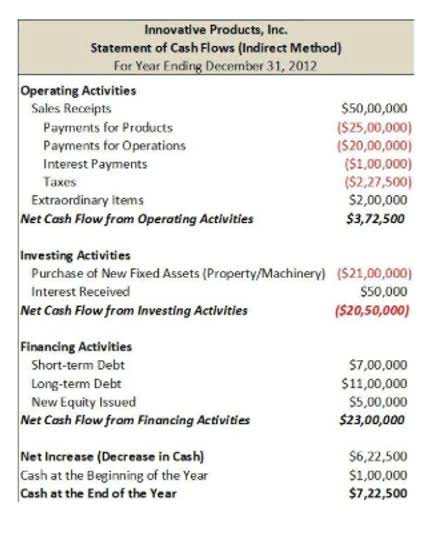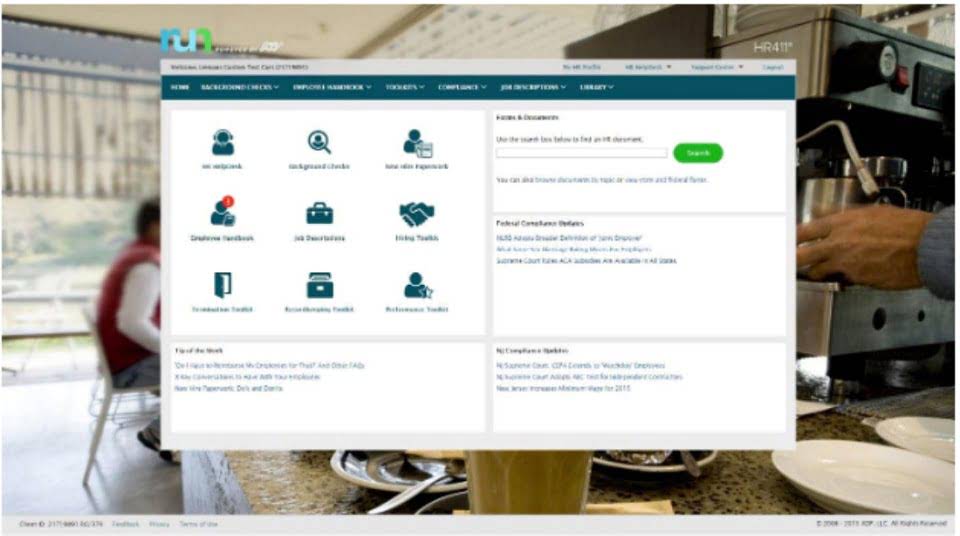State Law Nonprofit Audit Requirements
In this article, we’ll explain how to audit a small nonprofit organization—from choosing an auditor to preparing and compiling key financial documents. We’ll also discuss how to analyze the data collected during an audit and provide some https://holycitysinner.com/top-benefits-of-accounting-services-for-nonprofit-organizati/ tips for ensuring your audit is successful. Revenue recognition in nonprofit organizations requires careful consideration of donor intent, grant conditions, and the timing of resource inflows.
Florida Auditor GeneralSherrill F. Norman, CPA
The type of audit your organization conducts will depend on the size and complexity of your nonprofit and its specific needs. Auditors will generally send a PCB (Pull by Client) list of additional documents and information they will need to complete the audit. Items an auditor may ask you to prepare could include financial statements, bank reconciliations, payroll documents, details of any grants received, etc.
Clear Financial Policies and Procedures
This firm should be one that not only understands the intricacies of nonprofit financial statements but one that also has a reputation for thoroughness and integrity. A nonprofit audit is a comprehensive review of an organization’s records, reports, transactions, policies, and procedures. When a nonprofit audit is conducted by an independent auditor, its goal is to assess the organization’s overall health and ensure compliance with federal, state, and general financial regulations. Because state laws vary in the scope of their regulation of charitable nonprofits, this Guide includes a 50-state chart that shows whether there is an audit requirement in each state, and if so, under what conditions. This Nonprofit Audit Guide will help you understand what independent audits are, and help you prepare your nonprofit for an audit. At the end of the audit, the auditor provides an opinion on the accuracy and reliability of your financial statements.
Question: What are the key audit requirements for nonprofits receiving federal funds?
- Familiarity with GAAP ensures financial statements are prepared consistently and comparably, providing a clear and accurate picture of the organization’s financial standing for auditors and stakeholders alike.
- A nonprofit auditing firm can unearth the discrepancies, relationships, and transactions that activated the IRS audits in the first place.
- Nonprofits operating in Georgia must be aware of these state-specific rules to avoid non-compliance.
- This article provides practical tips for updating your mission, including reasons for change, a step-by-step guide, and how to stay focused throughout the process.
- Once these discrepancies or risks have been identified, auditors will then provide their recommendations for addressing them in order to ensure that future operations are compliant with reporting standards.
Contributions can be classified as unrestricted, temporarily restricted, or permanently restricted under FASB ASC 958, which provides guidelines for recognizing and classifying these streams. The diverse revenue streams of nonprofits—donations, grants, and membership fees—require specialized revenue recognition practices. Unlike for-profit entities, nonprofit revenue often involves donor restrictions or grant conditions. Auditors must verify compliance with these stipulations, ensuring revenue is recognized according to donor intent and applicable accounting standards.
Most of these verifications and corrections are accomplished by telephone or in writing. However, if the audit process fails to resolve certain matters after a reasonable time period, the correspondent accounting services for nonprofit organizations audit could possibly ramp up to a field audit. This potential occurrence is another good reason why accounting records should be consistently kept in order. It also makes the case for a regular independent audit to flush out issues in advance of an initial contact letter from the IRS. Less extensive than the field audit, the office or correspondence audit rarely includes a face-to-face encounter with an IRS representative. Dedicated audit preparation comes with our standard bookkeeping and accounting services for mid-sized to large nonprofits and is available as an add-on for small organizations.
Free Nonprofit Budget Templates
Those details will come in super handy when you start projecting expenses for next year. A nonprofit budget is crucial as it helps you keep a check on your long and short-term goals. It will also keep your donors informed as it is rather important that you have a certain level of transparency with them.
Improving Chances of Securing Funding
This gives you a greater understanding of the different business aspects of a nonprofit and provides a framework for considering how to most effectively distribute your funds. A well-planned budgeting process is key to your nonprofit’s success. A nonprofit budget template is a fillable document that simplifies your budgeting. It should include some typical sources of revenue and expenses, which saves you time on listing everything out. If any of the sources don’t apply to you, you can just delete them—likewise, you can add anything that’s missing. Your expenses will include the costs of running your nonprofit organization; such as salaries, rent, office supplies, and marketing.
Total Up Your Figures
Pleasant green shades on the cells perfectly focus attention, but do not distract from the cold counting. In this regard, you definitely will not lose it among other documents. A little lower, there is a place to record information about your organization, including name, email, address as well as other information. Next, you can find a structured spreadsheet where you can easily record all expenses (Government Tax, Various Billings, Non-Working Staff Wages, etc.).
Present Your Budget to the Board for Approval
- In this sense it is the primary source for making informed decisions, assessing funding needs, and communicating financial expectations to your board and stakeholders.
- Additionally, determine a timeline that ensures approval prior to the fiscal year-end.
- In the world of non-governmental organizations (NGOs), effective financial management is crucial for sustainability and impact.
- This guide provides a practical framework for assessing grant-funded programs and making the most of your funding opportunities.
- By choosing Zeffy, you can save more on your nonprofit’s expenses and keep 100% of your donations, with no hidden charges.
Make sure you include space for corporate donations on your budget, so you get a clear idea of how your income is split between individuals https://namesbluff.com/everything-you-should-know-about-accounting-services-for-nonprofit-organizations/ and corporations. This will help you plan your activities for the year ahead, so you know who to target with your campaigns and marketing. Seeing as appeals are usually for a specific project, this is an easy way to help you track those funds so they don’t get lost in your general revenue pot. Sometimes your revenue won’t come from an established program or a product you offer. Individual contributions can be a major way of funding your nonprofit.
For this reason we wait until after all the direct allocations are completed before we turn to allocating the indirect costs. The two most common methods for allocating indirect costs to programs are percentage of total direct costs and percentage of FTE. This example shows the estimated expenses and revenues of a nonprofit organization that runs community programs. The organization has planned to spend $102,500 on operations and projects (expenses) and expects to raise $135,500 through donations, fundraising events, and program fees (revenues).
- Since this is such an important document for accountability purposes, the layout should be easy-to-navigate, and the relevant applicable formulas should be as accurate as possible.
- It shows that your “and organization has thoroughly considered the financial aspects of the project.”
- By regularly updating this basic budget template, small NGOs can monitor their financial health and adjust their strategies as needed to ensure they remain on track toward achieving their goals.
- A popular methodology for this kind of planning is the S.M.A.R.T model, originally formulated for determining management goals.
- Gain clarity and control over your financial health with our Yearly Profit and Loss Statement Google Docs template.
Adequate research and realistic cost estimation
They come in different varieties to give you more choices for a reference! Not only that, we also have some important insights about the budget document written on our article! The budget was designed to meet Top Benefits of Accounting Services for Nonprofit Organizations You Should Know the needs of nonprofit organizations. It helps them create and maintain a comprehensive budget plan that provides financial stability and supports their mission.
- Compare how your pledged, requested, and other received amounts are doing in relation to each other to determine in which revenue areas there needs to be a renewed focus.
- Learn how to create a customized template that supports your grant-seeking success.
- To estimate your expenses, review your organization’s financial history and base your estimates on that.
- It includes taxes, wages for the staff, building maintenance, office supplies, repairs, funds, and others.
Login & Support ADP Workforce Now

If you have not previously logged in to the portal, you will need a registration code from your employer. If you are using a Mac, you need Microsoft Office 2008 for Mac – Business Edition to export report data to Excel, and Adobe Reader X (10.1.3) or later to print reports and tax forms. You will be debited for payroll and taxes up to 2 business days prior to check date depending on process time and if you have direct deposit activated on your account.

RUN Powered by ADP® Payroll for Partners

Stay connected to your team on the ADP Mobile Solutions app — rated 4.7 stars out of 5.0 with 2.7+ million reviews on the Apple App Store.
- Over 900,000 small businesses trust the RUN payroll & HR platform to run payroll fast,give their team more and stay ahead of whatever comes next.
- Follow the instructions to complete the registration process.
- Problems Logging In Please contact your company’s RUN Powered by ADP administrator for assistance.
- Pay statements generated from manual checks aren’t included in payroll packages.
- To go to your company’s login page, enter the custom domain name.
Help & Support
Use it to determine how much of each denomination to pay your cash employees. If you enter the same pay data every pay period, you can process your payroll automatically with RUN & Done. Administrator RegistrationAdministrators (practitioners) can now securely access ADP services from any computer (private or shared) and on any supported browser. For details about administrator access and security management, refer to the New Administrator Access Quick Reference Card. What To Do if You Are Locked Out of Your AccountIf you exceed the number of login attempts and are locked out of your account, please contact your company administrator for assistance. Deliver an exceptional employee experience and rest easy knowing that real-person support from payrolland HR professionals are just a call Accounts Payable Management (or click) away.

How to choose a payroll provider for your business
Problems Logging In Please contact your company’s administrator for assistance. Everything you need in one, integrated platform — like health insurance, retirement solutions, time tracking, workers’ comp and more — designed payroll to work seamlessly together within RUN. Includes ADP’s latest HR tools such as live HR support, employee handbook wizard, proactive compliance alerts, HR guidance and forms, and a job description wizard. Perfect for startups and established companies that simply need payroll, taxes, and help with compliance they can trust.
Process payroll & offer additional value-added services such as HR & Time for your clients with this wholesale solution for accounting professionals. RUN makes it easier for me to operate my business because it saves me more than 20 hours a month. I don’t have to manually run payroll, calculate taxes or worry about addressing regulation changes. I don’t want to be concerned about all those things and I don’t need to be, with RUN. Employee Registration On the Login page, click REGISTER NOW.
In a payroll, you run adp payroll login can select the period start & end dates (will prepopulate based on pay frequency). Activation When your account is first created, you will receive an email that contains a temporary password. If you’re an ADP Global Payroll user, whether you’re an ADP client payroll practitioner or an existing ADP client employee, click below to log in and manage your payroll and employee data securely. If you’re an ADP Vista user, whether you’re an ADP client payroll practitioner or an existing ADP client employee, click below to log in and manage your payroll and employee data securely. But it also has in-house offerings (like retirement benefits and workers’ compensation) that are directly tied to payroll in an easy-to-use way and the customer service has been excellent. From reliable payroll to complex HR support, the all-in-one RUN platform easily flexes as your needschange.
- On the next page, enter your temporary user ID and password and click Next.
- If you are using a Mac, you need Microsoft Office 2008 for Mac – Business Edition to export report data to Excel, and Adobe Reader X (10.1.3) or later to print reports and tax forms.
- Employee RegistrationSelect Register Now to start the registration process.
- And follow the instructions to answer a series of security questions.
Pay your people in just minutes, with an intuitive platform. Convenient HR and hiring tools also help you grow and manage your team. Problems Logging In Please contact your company’s RUN Powered by ADP administrator for assistance.

Employee RegistrationSelect Register Here to start the registration process. You will then have the ability to review your information and complete the registration process. For more information, please refer to the Employee Self Service Quick Reference Card. Administrator RegistrationSelect First Time Users Register Here to start the registration process.
Read MoreFrom Quote to Cash: How To Master the Q2C Process

When errors do occur, the greater visibility provided by an automated system makes it far easier to pinpoint and correct the issue. Using information gathered during the marketing and branding stages, your sales team determines the specific configuration of products and/or services you will need. This quote can be seen as an opening “hook” when attempting to attract a new customer. Sales pipeline management and forecasting is the process of predicting how sales efforts will lead to future business opportunities. According to McKinsey & Company, your organization’s quote-to-cash efficiency is essential for navigating contract price negotiation. The quote-to-cash process is an integrated suite of activities that seek to convert sales opportunities into paying, profitable, and ideally repeat customers.
- It includes everything from sales and contract management to order fulfillment, billing, and collections.
- Tracking this metric helps identify areas for improvement in your quoting process, pricing strategies, or sales training.
- Also, just like CPQ (configure, price, quote), OTC (order to cash) is occasionally used interchangeably with QTC.
- These data silos force finance teams to wait until they receive the correct order data before they can generate invoices.
- Understand the Quote to Cash (Q2C) process, its importance, and how to optimize it with key strategies and tools for improved sales and revenue management.
- In summary, the Record-to-Report process is crucial for maintaining the financial integrity of a business.
- Depending on the terms of the deal, this can happen all at once or over time (e.g., in subscription models).
Send the Invoice, Collect Payment, and Allocate Cash

Modern businesses continue to move toward offers with complex pricing schemes that extend beyond traditional subscription-based models. Automated order management systems have records that reveal any changes in the order or agreement that were made during the QTC process. Get the latest best practices, expert insights, and industry updates on procurement, purchasing, and AP automation — delivered straight to your inbox. PandaDoc is not a law firm, or a substitute for an attorney or law firm.

What is Quote-to-Cash?
- The quote-to-cash process includes stages that help make money and manage cash flow.
- ProfitWell Recognized ensures you no longer make mistakes in your profit and loss reporting.
- The need for repeated reviews and revisions is also considerably reduced through automation.
- An efficient Q2C process fosters understanding between parties, leading to more successful sales cycles.
- Sign up for the Salesblazer Highlights newsletter to get the latest sales news, insights, and best practices selected just for you.
- Your chances of cross-selling or upselling to a frustrated customer are almost zero.
A lot of customer-centered activity takes place in the quote-to-cash process. Most of the activities span various departments, and traditionally they have been siloed. But operating your business in such a manner leads to many inefficiencies, which could cost you significantly in the current https://www.bookstime.com/articles/pilot-bookkeeping-service competitive business world. Integrating and streamlining your quote-to-cash (Q2C) process is no longer an option but a necessity if you want to survive.
Growth + Profitability Summit 2025 Nashville
Invoices must be accurate and timely to ensure smooth payment processes. Data collection and metrics shall be collected during the whole Quote to Cash process, with a view to assessing the effectiveness of the sales cycle. Procurement KPIs such as quote-to-close ratios, sales cycle times, and customer payment trends help organizations identify areas for improvement and make data-driven decisions.
Key Takeaways
O2C starts after the order is placed and focuses on fulfillment and payment. Before the introduction of QTC management software, companies had to learn and handle separate CRM, order management, and accounting systems. This meant the finance team had to wait and receive the correct data for the order before they could generate invoices. What seems like even minor delays in the invoicing and collection process can cause significant problems with cash flow management. This also makes it more difficult for the finance team to create accurate forecasts. The quote-to-cash income statement process occurs throughout the entire sales cycle, the revenue management process, and is then subject to an analysis afterward to identify improvements.

It’s the engine of your sales cycle, impacting everything from how quickly you get paid to how happy your customers are. A well-structured Q2C process ensures efficient operations, accurate financials, and strong customer relationships, all of which contribute to a healthier bottom line. It’s about connecting the dots between sales, finance, and fulfillment for a smoother, more profitable operation.
It’s essential for strategic planning, accurate financial and operational feedback, and improving business functions for a better bottom line. Approving purchase orders can be a time-consuming process—especially for organizations with a manual P2P q2c process process. That’s because both the buyer and vendor must approve the PO, which can take several rounds of internal and external modifications.
- While both terms may seem similar, they actually refer to two different processes.
- Finally, the finance and/or accounting team(s) determine the best way to present the resulting information and share the report with internal and external stakeholders.
- Once your customer agrees to the terms, does the data have to be entered into a completely different system before it registers as a valid order?
- It involves multiple departments, systems, and stakeholders, each playing a crucial role in ensuring a seamless flow of operations.
- By integrating invoicing systems with your CRM and ERP, you can generate accurate invoices that reflect the agreed-upon pricing and terms.
- As a result, if your salesmen are unable to provide a competitive, error-free estimate for whatever reason, you may wind up with few new prospects.
- After all, price is one of the most important details to provide in a quotation.
- This improves financial reporting accuracy and reduces revenue leaks from misunderstandings.
- The quote-to-cash process is cross-functional and is owned by sales, legal, fulfillment, and finance.
- This process gap in “quote to cash” bottlenecks invoicing and collections and causes SaaS companies to fall behind on cash schedules.
- Set up regular touchpoints to keep both teams aligned on the status of quotes, approvals, and customer requests.
- But, regardless, your team needs to be very fast as research shows the sale goes to whoever responds the fastest.
- A clear, well-structured quote helps potential customers understand the value proposition and sets the stage for a smooth sales process.
By prioritizing the integrity and integration of these key business processes, organizations can unlock a wealth of strategic opportunities, driving efficiency, innovation, and growth. Additionally, investing in training for finance and accounting teams and adopting advanced financial management software can further enhance the R2R process’s efficiency and reliability. The many elements of quote-to-cash workflows can create confusion if not managed properly. Unfortunately, many businesses face challenges with their Q2C process, which can result in a poor customer experience, low customer retention, and delayed business processes. Q2C (Quote-to-Cash) – This broader end-to-end framework covers everything from a customer requesting a quote to the final revenue of the sale. CPQ is an important step within the framework, but Q2C also covers contract management, order fulfillment, billing, payment collection, and revenue recognition.
Read MoreAccounts Payable Finance & Administration

To prepare a disbursement account, you must identify a vessel’s needs, gather cost estimates, determine any sources of funding, and ensure that the correct template is populated with accurate and reliable data. When a checking account is required, the fund custodian must sign the bank signature card. OUB office disbursement account staff will ask for a pictured ID to verify the identity of the fund custodian when opening an account. If there is need, other individuals can be authorized to checks on the bank account. These individuals will be required to sign the checking account signature card and to provide a valid pictured ID.
Disbursement Accounting Software and Tools
Personal loans are typically directly deposited to the borrower’s checking account, while student loans may go directly to the school to pay for fees and tuition. When you apply for a mortgage loan, the funds are usually paid directly to the seller.It is essential that you ask your lender how they will disburse the funds. In some situations, you need cash directly, but the lender may only be willing to use other methods to pay the funds. In the realm of disbursement accounting, one crucial aspect that demands meticulous attention is the recording of disbursements. Accurate and efficient recording ensures transparency, accountability, and compliance with financial regulations.

From another financial Institution to Merrill
Controlled disbursement is a common cash management technique that helps companies to monitor and structure payments while benefiting as much as possible from earned interest. Controlled disbursement is used to regulate the flow of checks through the banking system on a daily basis, usually by mandating once-daily distributions of checks (typically early in the day). This is done in order to meet certain investment or fund management objectives.
- Please provide the last 4 or 5 digits of the checking account, the custodian’s name, the project (grant or fund) number and the starting check number you wish for the new order to begin with.
- For instance, a note may disclose significant disbursements made for research and development activities or legal settlements.
- Digital disbursements happen electronically rather than through physical means like paper checks.
- The money must be kept separate from the firm’s own money which will be held in its own business account (rule 4.1).
- Payment disbursement refers to the process of distributing funds or payments to individuals or entities.
- Our software makes it possible to digitize receivables, automate processing, reduce time-to-cash, eliminate transaction fees, and enable new revenue.
Dividend Payments
No interest will be charged and loan fees will be returned to the loan holder. For vendor invoices with credit terms, expenses or asset purchases like inventory or fixed assets may be recorded before a disbursement or remittance pays the cash to a supplier. Some expenses like depreciation and amortization are non-cash expenses that are not Accounting Periods and Methods considered disbursements. Higher interest-earning assets can be left in place for a longer period of time to continue generating profits, while lower interest-earning assets can be used for immediate or short-term payment needs.
Received a random Disbursement account check in the mail from a local hospital. Why exactly did I get this?

A bookkeeper records each transaction and posts it to one or more ledgers, such as a cash disbursement journal and the general ledger. Disbursements are recorded with the date, the payee name, the amount debited or credited, the payment method, and the purpose of the payment. Remote or delayed disbursement deliberately stalls the payment process by paying with a check drawn from a bank located in a remote region. When banks could process a payment only when the original paper check was received, this delayed the debit to the payer’s account for several business days.
- Empower your organization with Microsoft 365 Copilot Chat that supercharges productivity, sparks creativity, and keeps your data protected with enterprise data protection.
- You can also create several other types of useful reports to bring clarity and insight to your business.
- The disbursement team then reviews these claims, validates them, and processes the reimbursement payments accordingly.
- First, to maximize the potential for earned interest, corporations will typically stash their assets into high interest earning accounts until they are needed at a later time for the disbursement of payments.
- External audit reports offer assurance to stakeholders that the reported disbursements are in accordance with applicable accounting standards and regulations.
- A disbursement includes the date, payee name, amount credited or debited, payment method, the purpose of the payment and its effect on the overall cash balance.
- Wells Fargo Vantage℠ is an integrated, intuitive platform to help modernize your banking experience.
The True Cost of Outdated Payment Systems
Make sure that you entered the correct bank account number because the SSS will not be held liable in case you provided the wrong information. It is usual for firms to ask for money on account of their costs from a client, based on an estimate of those costs but where no bill has been delivered. This money has to be paid promptly into a client account as set out in rule 2.3 of the Accounts Rules. All of these types of money are client money (as defined in the Accounts Rules) and need to be held in a client account (subject to some exceptions – see rule 2.2 and 2.3 of the Accounts Rules).
Which benefit or loan works with each SSS disbursement channel?

An immediate cash payment not billed for later payment is a debit to the expense account or asset. Disbursement is a crucial aspect of finance that involves the distribution of funds from a source to various recipients. Whether it’s a company paying its employees, a government distributing social welfare benefits, or a lender providing a loan, disbursement plays a vital role in ensuring the smooth flow of financial transactions. In this article, we will explore what disbursement is, how it works, the different types of disbursement, and provide examples to illustrate its significance in various contexts.

The longer the company goes without detecting fraudulent disbursements, the more devastating it can be. As https://www.bookstime.com/articles/how-to-calculate-reorder-points you can see, the purpose and use of disbursements can vary widely, though they’re a key aspect of any business’s financial management. For instance, a retiree might receive a disbursement from their pension fund, or a bank can make a loan disbursement to a borrower. It’s a general concept that can describe various types of cash outflows for both business and personal use. To enroll your bank account in SSS, you must have an active My.SSS account, as well as a PESONet-participating bank account or e-wallet account (GCash or PayMaya).
Read MoreConstruction Bookkeeping: 8 Tips for Contractors

They ensure that progress billing is done accurately, and invoices are sent promptly as work progresses, reducing the bookkeeping for construction companies chances of delayed payments. It helps track expenses, manage cash flow, and make informed financial decisions. However, bookkeeping for construction companies can be complex and challenging.
Recording Financial Transactions
A balance sheet is an overview of a company’s finances, including assets, liabilities, and equity. Even when they are not collectible within the “current” timeframe of 12 months, retainage accounts are typically shown as current accounts and current liabilities, respectively. As a result, the financial statements of construction companies often include a paragraph describing the special treatment of retention. Construction businesses that have annual revenues exceeding $25 million over the last three years are required to use the percentage of completion method. These larger businesses also include general overhead costs AI in Accounting within each project, which has the advantage of providing clear insight into exactly how profitable each job is.

Break out of the endless cashflow cycle and build permanent profit.
That’s unlike a construction project, where accountants need to take into account — pun intended — labor costs in different states and localities (more on that later). This helps you catch discrepancies early, understand your financial health, and make informed decisions about your business’s future. Regular reviews also prepare you for unexpected audits and help you see overall your financial trajectory, so you can strategize and plan for upcoming projects more effectively. Below are the key factors in which construction accounting and bookkeeping differ from other types of accounting.
Pursue More ProfitableProjects With Insightful Financial Reporting
- These larger businesses also include general overhead costs within each project, which has the advantage of providing clear insight into exactly how profitable each job is.
- Their responsibilities differ significantly from standard bookkeeping, as they need to account for project-specific variables like labor, materials, and job costing.
- Regular reviews also prepare you for unexpected audits and help you see overall your financial trajectory, so you can strategize and plan for upcoming projects more effectively.
- One of the most significant challenges in construction is dealing with fluctuating material and labor costs.
- Another way of thinking about this method is — everything gets onto the income statement at one single point.
- For better clarity, here are all the billing methods with short explanations of how they work in everyday operations.
Job costing entails a granular breakdown of expenses attached to each project. As a result, it helps contractors spot potential problems and more easily plan similar projects in the future. In simple terms, the contractor records the earned revenue each time they issue an invoice. This method is helpful because it allows the contractor to bill for the work as they go, especially when they have multiple ongoing projects. In most cases, the percentage-of-completion method works in stages or payment milestones.

Creating Financial Statements

These insights help inform key decisions, including budgeting, forecasting, and managing cash flow effectively. Real-time cost updates, allowing you to monitor financials as projects progress. Contractor Foreman is great for smaller to medium-sized businesses looking for an all-in-one tool to manage projects, track costs, and keep accurate financial records.
- Based on the project’s necessary job types and activities, you’ll be paying varying rates.
- Construction accounting is a unique form of bookkeeping and financial management.
- Since many construction companies charge per project, pricing can vary in the same categories from one project to another due to market fluctuations.
- Construction businesses must adhere to a host of regulations and standards, making bookkeeping even more complex.
- They argue that several bank accounts fit for purpose help you see your financial health (or otherwise) with clarity.
- At Construction Cost Accounting, we ensure that your financial records are accurate, organized, and up-to-date.
- Any bookkeeping solution you choose should have these core features at a minimum.
Controlling costs with construction accounting

This person (or people) can help ensure that nothing slips through the cracks. With hundreds of clever digital tools out there, it’s not advisable to accounting keep an analogous schedule for a busy construction team. In fact, properly backed-up record-keeping protects the company against theft or embezzlement from within the business itself. As with any industry, construction sometimes falls prey to malicious actors or plain human mistakes. At any rate, do everything in your power to have an all-encompassing database that helps you keep track of things.
Read More32 Types Of Nonprofits: The Complete List
Generally, a nonprofit status, such as a 501(c)(4) or a 501(c)(6), is specifically designated for a certain organizational mission, albeit in a broad sense. For example, a 501(c)(4) is designated for community social welfare organizations and a 501(c)(6) is designated for business leagues. If your organization’s mission aligns with these descriptions, it is a good idea to consider applying for one of these tax-exempt statuses. Fiscal sponsorship is often used by newly formed nonprofits that need to raise money during the start-up phase, before they are recognized as tax-exempt by the IRS. Using a fiscal sponsor enables a program or organization that does not itself qualify as tax-exempt to attract funding for its operations that will — through the fiscal sponsor – be tax-deductible to donors.
- There may be more scrutiny from the public, as people tend to hold charitable organizations and their members to higher standards than for-profit corporations.
- A 501(c)(4) is a tax-exempt organization that operates to promote social welfare within a community.
- Nonprofit organizations are typically tax-exempt entities that operate to better the community.
- Nonprofit organizations are sometimes called NPOs or 501(c)(3) organizations based on the section of the Internal Revenue Service (IRS) tax code that permits them to operate.
- Societies also benefit from 501(c)(3) organizations as they get the benefit of a social return due to the programs and services nonprofits provide.
Social
The IRS, in this case (the location is Cincinnati), approves the request of the board of trustees local pension fund to be classified as a (C) (3) organization. However, the determination letter sent to the organization mentions that the status applies only to the current plan 5 Main Benefits of Accounting Services for Nonprofit Organizations communicated. The letter mentions that any changes of qualification, guidance issues, or statutes enacted that are brought into effect after the dates mentioned in the request shall not be applicable. The letter also specifies documentation and presentation of such official communications for future use. With Boardable, you can schedule meetings with ease, securely share documents, assign and track tasks, and keep clear, accessible records of board activity—all in one place. It’s not just about saving time (though it definitely helps with that); it’s about creating a culture of transparency and accountability that supports compliance and strengthens trust.
Foundation Group’s 501(c)( Startup Services
- Understanding where your organization fits can help ensure proper governance and IRS compliance.
- And as organizations are developed to address these new societal concerns, the charitable exemption under 501(c)(3) is likely to evolve as well.
- Some nonprofits obtain funding through donors while others do so via contributions from members, grants and the sale of products or services.
- Private foundations, charitable trusts, and political organizations also must file a Form 990.
- Once registered and running, the organization has to maintain compliance with the appropriate state agency that regulates charitable organizations.
501(c)(3) nonprofit organizations may also be obligated to pay employment, property, and sales taxes. If an organization is labeled 501(c), it means it is a nonprofit organization concerned with providing a public benefit and is exempt from paying federal income taxes. The 501(c) designation encompasses many types of organizations, including charities, government entities, advocacy groups, educational and artistic groups, and religious entities. Most people are familiar with them as churches and charities but they also include private foundations. They receive favorable tax treatment, such as avoiding federal income and unemployment taxes. Unlike public charities, private foundations receive their financial support from a small group of individuals, a family, or a corporation.
What Benefits Do 501(c)( Organizations Receive?
If the group does any political advocacy, for example, it would cease to be tax free. An organization may have applied for reinstatement of its tax-exempt status after the automatic revocation date had posted. IRS will recognize the reinstatement of the organization’s tax-exempt status if the application is approved. You can find out if the exemption status has been reinstated by reviewing the Pub. 78 Data (for 501(c)(3) organizations) or reviewing its determination letter, which would show an effective date on or after the automatic revocation date, with the online tool or the bulk data download files.
c)( – Labor and Agricultural Organizations
- This means the majority of board members should not be related by blood, marriage, or outside business connection.
- The total amount of donations to a tax-exempt public charity that an individual can claim is generally limited to 60% of their adjusted gross income (AGI) as of 2025.
- IRS will recognize the reinstatement of the organization’s tax-exempt status if the application is approved.
- Using a fiscal sponsorship arrangement offers a way for a cause to attract donors even when it is not yet recognized as tax-exempt under Internal Revenue Code Section 501(c)(3).
- Donation deductibility for individuals is limited to 50% of adjusted gross income.
- Strict rules apply to both the activities and the governance of these organizations to ensure they truly fulfill their IRS-defined purposes.
It’s everything you need to go from nonprofit startup to standout—with less stress and more clarity. Strong governance keeps you in good standing with the IRS and strengthens your organization’s capacity to lead, grow, and secure funding. A well-run board can be powerful for mission alignment, strategic clarity, and community impact. This includes approving budgets, reviewing financial statements, hiring and evaluating executive leadership, and maintaining ethical standards. Board members must exercise fiduciary duty—meaning they are expected to act with care and loyalty to the organization’s purpose. OK, so maybe you don’t want to start your own nonprofit organization, but you’d like to give to one.
For example, charitable organizations must exist for one of the reasons listed above. Organizations in pursuit of philanthropic, nonprofit, or civic activities can qualify as tax-exempt as part of section 501(c)(3) of the U.S. Form 990-N (e-Postcard) is an annual electronic notice most small tax-exempt organizations (annual gross receipts normally $50,000 or less) are eligible to file instead of Form 990 or Form 990-EZ. If a university medical school discovers a cure for diabetes, they can’t keep that information to themselves in order to privately benefit or profit from it. Nor can they sell that information to a pharmaceutical https://greatercollinwood.org/main-benefits-of-accounting-services-for-nonprofit-organizations/ company for money. Public interest means no person nor business has the legal right to take the findings of charitably funded research and profit from it privately.
Search for tax exempt organizations
First, it exempts organizations from federal income tax, freeing up more of their budget to spend on mission-critical programs. Second, donations made to an approved 501(c)(3) are tax-deductible for the donor, which incentivizes charitable giving. These two factors alone can significantly elevate a nonprofit’s credibility among potential supporters, foundation grantors, and community members. A 501(c)(3) nonprofit organization is generally a business entity that adds to the public good. The name comes from section 501(c)(3) of the IRS tax code, which defines the primary purposes of an organization that may qualify it for exemption from federal income tax liability.
Public charities typically rely on many small donors for their support. Finally, when deciding which nonprofit status to apply for to receive tax-exempt status for your organization, consider who organized the organization. Some nonprofit statuses put restrictions on who is allowed to begin such organizations. For example, a 501(c)(1) organization (which includes federal credit unions) can only be created by an act of Congress. Therefore, a private citizen should not attempt to apply for this nonprofit designation. A 501(c)(4) is an attractive option for some organizations because it supports engaging in some political activities so long as they align with the nonprofit’s mission.
Read More